Links to external sources may no longer work as intended. The content may not represent the latest thinking in this area or the Society’s current position on the topic.
Atlantic overturning: new observations and challenges

Scientific discussion meeting organised by Professor Meric Srokosz, Professor Penny Holliday and Professor Harry Bryden.
The Atlantic Meridional Overturning Circulation (AMOC) modulates our climate, including being a potential cause of rapid change. New observations over the last decade or so have revealed surprising aspects of the AMOC and led to a re-consideration of its stability and variability, its role in physical and biogeochemical components of the climate system, and its representation in climate models.
An accompanying journal issue has been published in Philosophical Transactions of the Royal Society A.
Attending this event
This meeting has taken place.
Enquiries: contact the Scientific Programmes team
Image credit: Dr Ben Moat
Recordings of the talks are now available below.
Click watch on YouTube to view the full video playlist.
Organisers
Schedule
Chair

Professor Helen Johnson, University of Oxford, UK

Professor Helen Johnson, University of Oxford, UK
Helen Johnson is Professor of Ocean and Climate Science in the Department of Earth Sciences at the University of Oxford. Her research is focused on understanding ocean circulation and the role it plays in the climate system. She is particularly interested in the Atlantic meridional overturning circulation, its variability and change, and its links to the Arctic Ocean. She currently leads the NERC-NSF Changing North Atlantic Programme SNAP-DRAGON, which is improving our understanding of the drivers of subpolar North Atlantic ocean circulation variability.
| 09:05 - 09:30 |
RAPID AMOC observations: from theory to an international standard in circulation monitoring
In this talk Professor Marotzke will relate the history of ideas that led to the establishment of the RAPID AMOC monitoring array at 26.5°N. The development started with largely unsuccessful attempts to find dynamically consistent formulations for zonally averaged models of the AMOC and to construct simplified yet quantitative pictures of the three-dimensional, geostrophic AMOC. A solution arose from plausible assumptions about the hydrographic structure near the boundaries; they could not be rigorously derived but permitted a theoretical estimate of AMOC strength as a function of latitude. A crucial ingredient was the assumption of geostrophic balance also across the western boundary current. This assumption could be turned into a monitoring strategy for the AMOC, using a limited number of full-depth dynamic-height moorings. A remarkable confluence of personal and professional events then allowed the implementation of this strategy through the RAPID monitoring array, creating the reference point for observing systems at other latitudes in the Atlantic. 
Professor Jochem Marotzke, Max Planck Institute for Meteorology, Germany

Professor Jochem Marotzke, Max Planck Institute for Meteorology, GermanyJochem Marotzke is a director at the Max Planck Institute for Meteorology. Since 2006 he has also been an honorary professor at the University of Hamburg. From 1999 to 2003, he was a professor at the Southampton Oceanography Centre, United Kingdom. Prior to this, he was a postdoctoral associate, assistant and associate professor at the Massachusetts Institute of Technology in the United States of America. In 2009, he was awarded the Fridtjof Nansen Medal of the European Geosciences Union, and in 2007 he was elected to the Deutsche Akademie der Naturforscher Leopoldina. He has served on the Joint Scientific Committee of the World Climate Research Programme and is chairman of the Scientific Advisory Board of GEOMAR, Germany. Professor Marotzke holds a doctorate in physical oceanography from the University of Kiel, Germany. His primary research interest is in the role of the ocean in the climate and Earth system. |
|---|---|
| 09:30 - 09:45 | Discussion |
| 09:45 - 10:15 |
The big AMOC question stemming from IPCC WG1
Has the Atlantic Meridional Overturning Circulation (AMOC) or Gulf Stream System of ocean currents collapsed or slowed due to climate change? The answer to this question is important; a slowdown is widely predicted by climate models and with it the expectation of a cooler, stormier climate, drier summers and wetter winters, to millions of people, especially in Europe. In the most extreme scenario of a complete collapse, a cascade of climate tipping points could ensue including, for example, an end of arable farming in Britain. So, what’s going on with the AMOC? In August 2021, the Intergovernmental Panel for Climate Change (IPCC) published its 6th Assessment Report stating there was low confidence in a 20th century AMOC slowdown. While that was consistent with the preceding 2013 report, it is in contrast with the 2019 IPCC Special Report on the Ocean and Cryosphere that stated with medium confidence that the AMOC had weakened relative to 1850–1900. One cause of this reversion in confidence assessment was conflicting observational and model-based estimates of AMOC trends. Here, Dr McCarthy takes a perspective on the divergence between climate models and observations of the AMOC and question whether it throws into doubt model projections of future weakening. 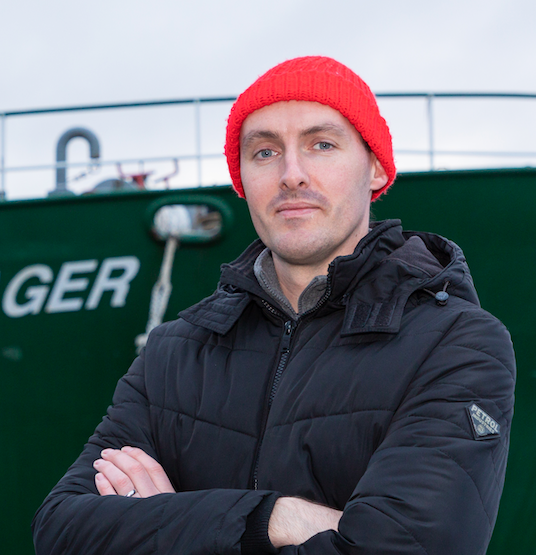
Dr Gerard McCarthy, Irish Climate Analysis and Research Units (ICARUS), Maynooth University, Ireland

Dr Gerard McCarthy, Irish Climate Analysis and Research Units (ICARUS), Maynooth University, IrelandGerard McCarthy is an Associate Professor in ICARUS (Irish Climate Research and Analysis Units) in the Department of Geography at Maynooth University, Ireland, where he leads a research team of ten scientists. His research interests are in physical oceanography, specialising in the Atlantic Meridional Overturning Circulation (AMOC), with particular interest in evolution of the AMOC in the 20th century. He has contributed expertise on changing ocean circulation to numerous climate reports including the IPCC’s AR6 report, the UK’s Marine Climate Change Impact Partnership, and the European Academies’ Science Advisory Council He leads the Marine Institute funded A4 project, is co-Investigator on EirOOS—the Irish Ocean Observing System, and leads a work package on the JPI Oceans and Climate project ROADMAP. He has been involved in a number of European projects including Thor, NACLIM, and Blue-Action. Gerard previously worked at the National Oceanography Centre, UK, where he worked with the RAPID team measuring the AMOC. |
| 10:15 - 10:30 | Discussion |
| 10:30 - 11:00 | Break |
| 11:00 - 11:30 |
The meridional overturning circulation in the subpolar North Atlantic: new results and new questions
The Overturning in the Subpolar North Atlantic Program (OSNAP) is a partnership among oceanographers from the US, UK, Germany, the Netherlands and Canada, whose goal is to measure and understand what drives the Atlantic Meridional Overturning Circulation (AMOC) and its variability. The OSNAP observing system, in place since 2014, provides a continuous record of the full-water column, trans-basin fluxes of heat, mass and freshwater in the subpolar North Atlantic. The first six-years of this time series have revealed surprising results on the mean and variability of the overturning circulation in the subpolar North Atlantic and have shed light on the AMOC forcing mechanisms on seasonal and interannual time scales. Additionally, the six-year time series of the meridional heat and freshwater fluxes reveal the complicated roles that both overturning and gyre dynamics play in the distribution of heat and freshwater across this basin. Complementing the moored array results is the OSNAP float program, which has elucidated the spreading pathways of Nordic Seas overflow waters in the subpolar North Atlantic. Collectively these Eulerian and Lagrangian measurements paint a complex picture of the overturning structure and variability in the North Atlantic and yet offer suggestions for its continued measurement. 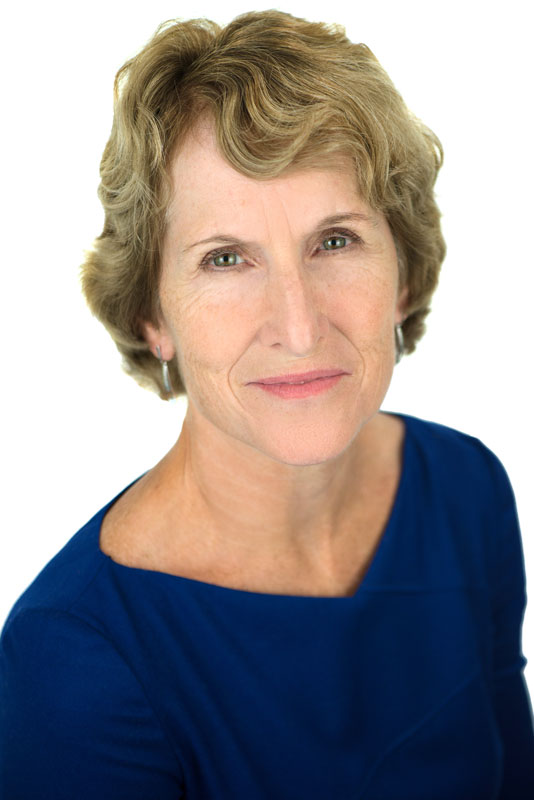
Professor Susan Lozier, Georgia Institute of Technology, USA

Professor Susan Lozier, Georgia Institute of Technology, USASusan Lozier is Dean of the College of Sciences at the Georgia Institute of Technology, where she holds the Betsy Middleton and John Clark Sutherland Chair. In this role, she provides leadership to ~2,500 students and 500 faculty members and researchers across six internationally-ranked schools. Dr. Lozier is a physical oceanographer whose research examines the ocean’s role in the climate system, with a focus on the meridional overturning circulation and its variability. She is a Fellow of the American Meteorological Society, American Geophysical Union, American Association for the Advancement of Science, and American Academy of Arts and Sciences and was a recent recipient of the Henry Stommel Research Medal from the American Meteorological Society. Finally, she currently serves as the President of the American Geophysical Union and as the international lead for the Overturning in the Subpolar North Atlantic Program, an observing system that measures the meridional overturning in the subpolar North Atlantic. |
| 11:30 - 11:45 | Discussion |
| 11:45 - 12:15 |
Labrador Sea Water spreading and the Atlantic Meridional Overturning Circulation
Labrador Sea Water (LSW) is formed by dramatic wintertime and spreads southward in the deep limb of the Atlantic Meridional Overturning Circulation (AMOC). In 1982, Talley and McCartney used the low potential vorticity signature of LSW to make the first North Atlantic maps of its properties. Forty years later, our understanding of LSW variability, spreading time scales, and importance has deepened. The southward spreading of this oxygen- and carbon-rich water mass is thought to prevent large-scale hypoxia in the North Atlantic and store anthropogenic carbon away from the atmosphere for hundreds of years. Motivated by these impacts, Dr Le Bras will highlight observations of LSW export from its formation regions and its subsequent southward spreading in the Deep Western Boundary Current. She will connect these findings to the hypothesized link between changes in LSW production and decadal subtropical AMOC variability and end with thoughts on relevant observing priorities for the next forty years. 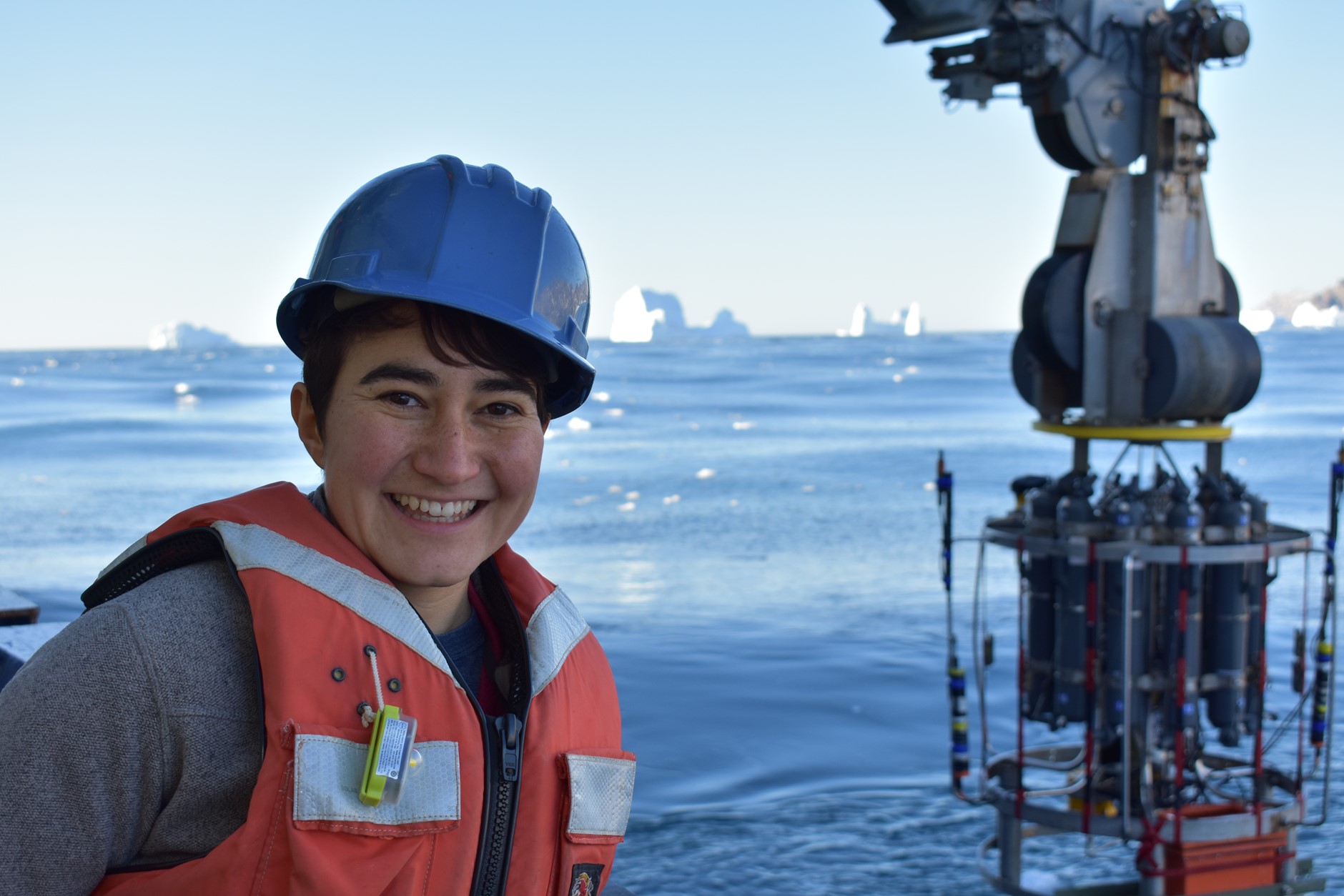
Dr Isabela Le Bras, Woods Hole Oceanographic Institution, USA

Dr Isabela Le Bras, Woods Hole Oceanographic Institution, USAIsabela Le Bras is a sea-going physical oceanographer at the Woods Hole Oceanographic Institution (WHOI) studying the ocean’s large-scale circulation. She received her B.A. in Physics from the University of California Berkeley in 2010, her Ph.D. from the MIT-WHOI Joint Program in 2017, and was a postdoctoral scholar at Scripps Institution of Oceanography until 2020. Her current research is focused on observing the intricate system of currents that comprise the Atlantic Meridional Overturning Circulation (AMOC), linkages between the Arctic and Atlantic, and high-latitude ocean dynamics. |
| 12:15 - 12:30 | Discussion |
| 12:30 - 13:30 | Lunch |
Chair

Professor Ric Williams, University of Liverpool, UK

Professor Ric Williams, University of Liverpool, UK
Ric Williams is a Professor in Ocean Sciences at University of Liverpool. His climate research focuses on how surface warming increases linearly with carbon emissions and how there may be delayed warming even after carbon emissions cease. His ocean research focuses on how climate projections for heat and carbon storage differ from each other, and the coupling between surface temperature, overturning and cloud feedbacks. Ric Williams obtained a Physics degree at Bristol University, a master’s degree in Atmospheric Physics at Imperial College and a PhD in Physical Oceanography at University of East Anglia. He has worked as researcher at Imperial College and won a 2-year NOAA fellowship at Massachusetts Institute of Technology, USA, and then moved to University of Liverpool. He has over 95 peer-reviewed publications and a textbook on Ocean Dynamics and the Carbon Cycle. He is currently the co-Director of the University of Liverpool research theme: Climate Futures.
| 13:30 - 14:00 |
Towards two decades of Atlantic Ocean mass and heat transports at 26.5N
Continuous measurements of the Atlantic meridional overturning circulation (AMOC) and meridional ocean heat transport at 26.5N began in April 2004 and are currently available through December 2020. Approximately 90% of the total meridional heat transport at 26.5N is carried by the overturning circulation, and an even larger fraction of the heat transport variability (~94%) is explained by the variability of the AMOC. The authors review the major interannual changes in the AMOC and meridional heat transport that have occurred over the nearly two decades of available observations and their documented impacts on North Atlantic heat content. Consistent with modeling results, it is believed that most of the short-term and interannual variability of the AMOC at 26.5N is related to local and regional wind forcing. However, there is emerging evidence that the secular decline in the AMOC and associated meridional heat transport since 2010 is linked to deep density changes along the western boundary, resulting from deep water mass changes at higher latitudes that are advected southward within the deep limb of the AMOC. 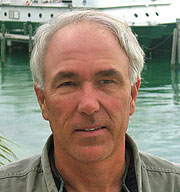
Professor Bill Johns, University of Miami, USA

Professor Bill Johns, University of Miami, USADr Johns is a seagoing oceanographer specializing in the use of long-term moored instrumentation to study ocean circulation. His research involves studies of the large-scale wind-driven circulation, with emphasis on the dynamics of western boundary currents, and on deep flows related to the global thermohaline circulation and climate variability. Dr Johns also studies the dynamics of straits and the exchange processes between the oceans and marginal seas, including marginal sea overflows. Research programs are currently underway in several regions of the Atlantic Ocean, including the 26.5degN RAPID/MOCHA program east of the Bahamas and the OSNAP program in the subpolar North Atlantic. Areas of previous active research include the Caribbean Sea and tropical Atlantic, and the Red Sea, Persian Gulf, and Gulf of Aden in the western Indian Ocean. |
|---|---|
| 14:00 - 14:15 | Discussion |
| 14:15 - 14:45 |
The AMOC and ocean salinity
The distribution of ocean salinity is expected to change as a result of increasing input of freshwater from the Arctic, a changing hydrological cycle and due to dynamics of the ocean itself. The field has come a long way since the first simple box models that showed the importance of the salt advection feedback on the AMOC. Models of increasing complexity have shown that there are multiple feedbacks that involve freshwater and salinity, some of which counteract each other. However, measuring salinity in the ocean and deriving transports of freshwater or salt from these measurements is not as straightforward as it sounds. In this talk Dr Femke de Jong will discuss advances made in uncovering the complexity of the relation between AMOC and salinity, observed trends in salinity, as well as remaining challenges in modelling and observations. 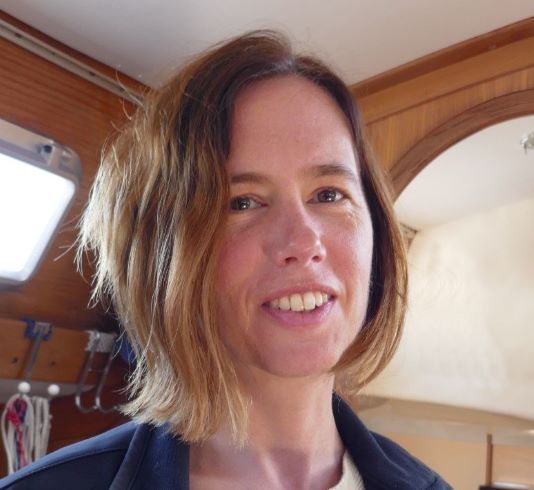
Dr Femke de Jong, Royal Netherlands Institute for Sea Research, The Netherlands

Dr Femke de Jong, Royal Netherlands Institute for Sea Research, The Netherlands
Biography to be available soon
|
| 14:45 - 15:00 | Discussion |
| 15:00 - 15:30 | Break |
| 15:30 - 16:00 |
Arctic freshwater impact on the AMOC: status and prospects
Arguably, the most conspicuous evidence for anthropogenic climate change lies in the Arctic Ocean. For example, the summer-time Arctic sea ice extent has declined over the last 40 years and the Arctic Ocean freshwater storage has increased over the last 30 years. Coupled climate models project that this extra freshwater will pass Greenland to enter the subpolar North Atlantic Ocean in the coming decades. Coupled climate models also project that the AMOC will weaken in the 21st century, associated with subpolar North Atlantic buoyancy increases. Yet, it remains unclear when the Arctic anthropogenic freshening signal will be detected in the subpolar North Atlantic, or what form the signal will take. Therefore, this talk will review the state of knowledge on Arctic Ocean freshening and freshwater export rates and pathways to the subpolar North Atlantic. The talk will focus on the export processes in data-constrained ocean circulation model hindcasts. It will also discuss the prospects to detect the emergence of Arctic anthropogenic freshening and the likely impacts on the AMOC. The challenge to distinguish anthropogenic signals from natural variability will be highlighted. 
Dr Thomas Haine, Johns Hopkins University, USA

Dr Thomas Haine, Johns Hopkins University, USATom Haine is a Professor in the department of Earth & Planetary Sciences at Johns Hopkins University. His training is in physics and oceanography. He studies and teaches ocean circulation and dynamics, and the ocean’s role in Earth’s climate. Particular interests are the North Atlantic and Arctic Oceans, and their rotating-stratified fluid dynamics, which are exquisite. His approaches are computational and theoretical, although he collaborates with observational oceanographers and has participated in twelve research expeditions. In 2019 he co-authored (with Barry Klinger) a graduate level textbook, entitled Ocean Circulation in Three Dimensions (Cambridge University Press). |
| 16:00 - 16:15 | Discussion |
| 16:15 - 16:45 |
Subpolar AMOC between Greenland and Scotland: large-scale mechanisms and linkages
The overturning circulation of the subpolar North Atlantic (SPNA) plays a fundamental role in Earth's climate variability and change. In this talk, Dr Chafik will discuss the recent warming period since 2016 in the eastern SPNA in the context of recent overturning changes from observations. He will also discuss the involved mechanisms and large-scale linkages that may have induced this recent warming in the SPNA. Finally, Dr Chafik will discuss the implications of these results for high-latitude ocean climate predictability. 
Dr Leon Chafik, Department of Meteorology, Stockholm University, Sweden

Dr Leon Chafik, Department of Meteorology, Stockholm University, SwedenLéon Chafik is a senior research scientist at the Department of Meteorology, Stockholm University. His main research interests lie in understanding the dynamics and variability of the North Atlantic Ocean circulation, especially that of the subpolar North Atlantic and Nordic Seas. He uses a combination of ocean observations (in-situ and remote sensing) and models to solve some of the puzzling dynamical issues in these oceans. Léon has held positions in the US (NOAA/UMD) and Norway (GFI) and was recently part of the OSNAP team at the National Oceanography Centre, Southampton, UK. |
| 16:45 - 17:00 | Discussion |
| 17:00 - 18:00 | Poster session |
Chair
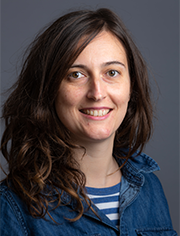
Dr Paola Moffa-Sanchez, University of Durham, UK

Dr Paola Moffa-Sanchez, University of Durham, UK
Paola Moffa-Sanchez is currently an assistant professor in palaeoceanography and paleoclimatology at Durham University. She did her PhD (2013) in recent North Atlantic palaeoceanography at the School of Earth and Ocean Sciences, Cardiff University. As a postdoctoral researcher, Paola worked on exploring past marine changes in other climatologically important regions at Rutgers University (2014-2016) and was later awarded a MSCA Postdoctoral Fellowship (2017) to continue some of her work at Cardiff University. A large part of her research has focused on understanding natural ocean changes in the North Atlantic region and their relation to decadal to centennial climate variability in the past millennia with a particular focus on the Atlantic’s Overturning circulation. To produce past ocean records, she uses a wide range of biological, chemical, and sedimentological tools on high-resolution marine sediment cores. These techniques allow extending observational ocean records and hence enable the study of natural variability beyond decades.
| 09:00 - 09:30 |
Evolution of the AMOC: From decades to Millenia
The Atlantic meridional overturning circulation (AMOC), one of Earth’s major ocean circulation systems, redistributes heat on our planet and has a major impact on climate. Its past and future strength are therefore of major interest, but the system is not easily measured. In this talk, the author will present what we know about the evolution of the AMOC over the last decades to millennia based on various sources: from the about 15 years of direct continuous observational data, to reanalysis products and ship measurements, to observational temperature and salinity records, and ocean sediment proxy data. This overview shows that while the AMOC displays a large amount of internal variability over the different time scales, its behaviour over the last one to two hundred years appears to be unprecedented compared to the last 1,600 years and various records suggest that the AMOC over the last decades has been weaker than ever before during this period. 
Dr Levke Caesar, Centre for Marine Environmental Sciences (MARUM), and Institute of Environmental Physics, University of Bremen, Germany

Dr Levke Caesar, Centre for Marine Environmental Sciences (MARUM), and Institute of Environmental Physics, University of Bremen, GermanyLevke Caesar is a climate physicist who studies the role of the Atlantic Meridional Overturning Circulation (AMOC) in the climate system. Her main focus of research is the evolution of the AMOC in the past, present and future and its interaction with the North Atlantic. During her PhD at the Potsdam Institute for Climate Impact Research, Levke Caesar worked on a reconstruction of the AMOC based on North Atlantic sea surface temperatures. In 2019, she took up a postdoctoral position at the Irish Climate Research and Analysis Unit to study Atlantic variability and its connection to the Irish shelf, while continuing her work on AMOC reconstructions. In October 2022, she started working at the University of Bremen to study the meridional connectivity of the AMOC. |
|---|---|
| 09:30 - 09:45 | Discussion |
| 09:45 - 10:15 |
AMOC Modeling for Past Climate and Its Relevance to Present and Future
Professor Liu will briefly review several advances and issues in paleo modelling of AMOC, with the focus on the glacial-interglacial changes, and their relevance to the present and future climate. (a) Water masses have changed dramatically between glacial and interglacial period in the Atlantic, with the AABW as the sole dominant water mass in the glacial period, caused primarily by the sea ice expansion and the brine rejection. (b) The responses of AMOC to changing greenhouse gases are likely opposite between fast (centennial) and slow (millennial and longer) time scales, partly because of the involvement of the Southern Ocean adjustment. (c) AMOC instability remains a challenge issue to study from both observational and modelling perspective. Most models seem to be over stable, but there are exceptional CGCMs that exhibits strong bi-stability. (d) The evolution of AMOC transport can be studied qualitatively using certain proxies, notably d18Oc and Ph/Th, while other proxies, such as ∆C14 and δC13, only constrain water masses. (e) The 3-D circulation of AMOC may have also changed during the past, with different mechanisms from the present. 
Professor Zhengyu Liu, The Ohio State University, USA

Professor Zhengyu Liu, The Ohio State University, USAProfessor Liu is a climate dynamist, currently serving as the Max Thomas Professor of Climate Dynamics in the Department of Geography, The Ohio State University. He received his BS in applied mathematics from Nanjing Institute of Meteorology (China), MS in dynamic meteorology from Chinese Academy of Sciences and Ph.D in physical oceanography from MIT. He then worked as an assistant, associate and full professor in The University of Wisconsin-Madison from 1991-2017, before moving to Ohio in 2017. He is a fellow of the American Geophysical Union, American Meteorological Society and American Association for the Advancement of Sciences. His work spans from climate dynamics, ocean-atmosphere-land interactions, dynamics of oceanic circulation to paleoclimate modelling and earth system modelling. |
| 10:15 - 10:30 | Discussion |
| 10:30 - 11:00 | Break |
| 11:00 - 11:30 |
AMOC and carbon across the Atlantic
The ocean carbon sink currently mitigates the continuing build-up of carbon dioxide in the atmosphere by absorbing approximately 30% of all additional CO2 derived from human activities. Within the Atlantic, the overturning circulation is thought to play a key role, through its effect on biological productivity (by transporting nutrients to productive regions), the physical carbon pump (where heat fluxes change the solubility of surface waters to CO2), and the removal of surface waters replete with high levels of anthropogenic carbon to depth on climatically important timescales. While decadal variation in the overturning circulation has been linked to changing global carbon uptake patterns, knowledge about their correspondence over shorter timescales, and smaller spatial scales, is less well characterised. Here Dr Brown explores our current understanding of the relationship between AMOC variability and the biogeochemical response, and how projected AMOC changes are likely to impact the continuing ability of Atlantic surface air-sea CO2 fluxes to mitigate anthropogenic climate change. 
Dr Peter Brown, National Oceanography Centre, Southampton, UK

Dr Peter Brown, National Oceanography Centre, Southampton, UKDr Peter Brown is a Chemical Oceanographer at the National Oceanography Centre, Southampton, UK. His work focuses on the uptake, transport and long-term oceanic storage of natural, anthropogenic, and contemporary carbon, and the physical and biogeochemical processes that drive surface carbon variability. He previously worked at the University of East Anglia and the British Antarctic Survey investigating subtropical and Southern Ocean carbon and freshwater fluxes, before joining NOC to work on the ABC-Fluxes project, that looked to instrument the RAPID mooring array with biogeochemical samplers and sensors. He is currently involved in projects that have looked to extend this approach to the southeast Pacific, Davis Strait, Florida Straits, and the eastern boundary of the subtropical North Atlantic. |
| 11:30 - 11:45 | Discussion |
| 11:45 - 12:15 |
Challenges simulating the Atlantic meridional overturning circulation in climate models
The Working Group I Sixth Assessment Report of the Intergovernmental Panel on Climate Change (AR6) assessed past and future changes in the Atlantic meridional overturning circulation (AMOC). The report assessed that there was low agreement between modelled changes and both observations and reconstructions. The low agreement findings meant that confidence in past and future changes was reduced relative to previous reports. In particular, although it was assessed that the AMOC was very likely to decline over the 21st century under all emissions scenarios, there was low confidence in the magnitude of the decline. Similar discrepancies have been seen in the UK HadGEM3 climate model at different resolutions, with the resolution changing model biases, which in turn affect the magnitude of AMOC weakening. The strength of Labrador Sea convection is identified as an important factor in the resolution dependence and is linked to the salinity of the western subpolar gyre. Understanding and reducing the saline bias is a key goal for future climate models and we describe some of the possible causes. 
Dr Laura Jackson, Hadley Centre, Met Office, UK

Dr Laura Jackson, Hadley Centre, Met Office, UKDr Laura Jackson is a climate scientist at the Hadley Centre in Met Office. She works on understanding the role of the AMOC and the wider North Atlantic ocean in the climate system through using climate models in comparison to observations. Her work also includes improving understanding of how well climate models represent important processes and how uncertainty in modelling and projections of the AMOC can be reduced. Laura has collaborated with previous RAPID programs and is currently a project partner for the NERC SNAPDRAGON and WISHBONE projects, and also researches AMOC tipping points as part of the Horizon funded TiPES project. She was a contributing author to the IPCC sixth assessment report for Working Group 1 and the Special Report on the Ocean and Cryosphere in a Changing Climate, and is also a member of the CLIVAR Atlantic Regional Panel and the CLIVAR Atlantic Task Team. |
| 12:15 - 12:30 | Discussion |
| 12:30 - 13:30 | Lunch |
Chair
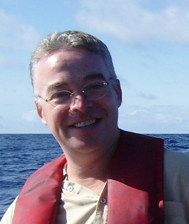
Professor Stuart A. Cunningham, Scottish Association for Marine Science & The University of the Highlands and Islands, UK

Professor Stuart A. Cunningham, Scottish Association for Marine Science & The University of the Highlands and Islands, UK
Stuart Cunningham is an observational Physical Oceanographer specialising in ocean measurements for climate studies. He began his career in 1990 with the Institute of Oceanographic Sciences, Deacon Laboratory as a research assistant in the World Ocean Circulation Experiment, then at the James Rennell Centre. From 1995-2012 he worked at the National Oceanography Centre, Southampton. He is now a Professor at the Scottish Association for Marine Science and teaches with the University of the Highlands and Islands. He has led 35 research cruises as Principal Scientist around the world’s oceans. Since the early 2000s Stuart has focused on purposefully designed mooring arrays. He was a PI and led the RAPID field programme for ten years. He is now a PI in the subpolar OSNAP programme for observing and monitoring the Atlantic Meridional Overturning Circulation (AMOC).
| 13:30 - 14:00 |
AMOC, AMV and climate
Over the last century or so, sea surface temperatures in the North Atlantic have undergone multi-decadal periods of relative warmth and relative cold - a phenomenon known as Atlantic Multi-decadal Variability (AMV). These slow ocean changes have been linked to a wide range of climate impacts globally including heat waves, floods and hurricanes. However, understanding of the processes that drive AMV remains very incomplete. One of the key hypotheses is that AMV is an expression of natural multi-decadal changes in the AMOC. However, over the past decade, other hypotheses have been proposed: in particular, that AMV can be largely explained as a response to human activities, especially anthropogenic aerosol emissions, and might not require a role for the AMOC. However, climate models are not perfect and so there is still large uncertainty in how they represent AMV. Therefore, this talk will review the latest understanding of the processes and drivers that shape AMV and discuss the implications for decadal time-scale predictions. Additionally, it will present new efforts to understand the processes shaping the externally forced component of AMV and AMOC through analysis of state-of-the-art climate simulations. 
Dr Jon Robson, National Centre for Atmospheric Sciences, University of Reading, UK

Dr Jon Robson, National Centre for Atmospheric Sciences, University of Reading, UKDr Jon Robson is a Principal Research Scientist based at the National Centre for Atmospheric Science at the University of Reading, where he works on better understanding variability in the North Atlantic Ocean and its role in regional climate variability. In particular, Jon brings models and observations together to better understand the drivers of AMOC and North Atlantic climate variability, and uses initialised climate predictions to better understand the predictability of the North Atlantic Climate System with a particular focus on decadal timescales. Jon was the Atmosphere/Climate theme leader for the NERC ACSIS program and currently leads the NERC WISHBONE project to better understand the climate impacts of decadal timescale variability in the subpolar North Atlantic. Jon was a contributing author to the IPCC sixth assessment report for Working Group 1 and is also co-chair of the WCRP Decadal Climate Prediction Project panel. |
|---|---|
| 14:00 - 14:15 | Discussion |
| 14:15 - 14:45 |
The role of buoyancy forcing in the Atlantic Overturning Circulation
In this presentation Dr Buckley will discuss the role of buoyancy forcing in the mean and time variable Atlantic meridional overturning circulation (AMOC). The higher salinity of the Atlantic compared to the Pacific leads to deep convection being restricted to the Atlantic and thus a deep overturning in the Atlantic basin. The energy needed to sustain a deep reaching circulation is thought to be provided by wind-driven upwelling over the Southern Ocean. Yet, recent work has shown that is it possible to sustain a vigorous overturning circulation in the absence of wind forcing, provided that there is a zonally unblocked channel, suggesting that the role of buoyancy forcing in maintaining the mean overturning circulation may be underestimated. Large-scale, decadal variability of the overturning circulation is thought to be mostly due to buoyancy forcing over the subpolar North Atlantic. Winds lead to higher frequency, gyre-specific AMOC variations, which reduce the meridional correlation of the AMOC. 
Dr Martha Buckley, George Mason University, Fairfax, VA, USA

Dr Martha Buckley, George Mason University, Fairfax, VA, USAMartha Buckley completed her bachelor’s degree in math and physics at the Massachusetts Institute of Technology, where she was first introduced to geophysical fluid dynamics in John Marshall, Lodovica Ilari, and Alan Plumb’s laboratory class. She completed her PhD in Physics of the Atmosphere, Ocean, and Climate at MIT, advised by John Marshall. She has been involved with the US AMOC and RAPID program since her time in graduate school, and she served a two-year term on the US AMOC Executive Committee. Along with John Marshall, she published an extensive, highly-cited review paper about the AMOC in 2016. She currently is an Associate Research Professor at George Mason University, near Washington, DC, where she lives. |
| 14:45 - 15:00 | Discussion |
| 15:00 - 15:30 | Break |
| 15:30 - 16:00 |
Should AMOC observations continue - how and why?
Whether AMOC observations should continue is a provocative question - for whom and to what end? Unlike Argo float data, the AMOC observations cannot be directly assimilated into forecasting models and the resultant improvement in the forecast quantified. AMOC observations provide a benchmark for climate models, but agreement between observations and models is not required nor expected between a single instance of the AMOC in the real ocean vs the many simulations of the AMOC in a freely running coupled system. Yet it is clear that observing the AMOC has fundamentally changed our view of how the ocean circulation varies, how it moves heat and freshwater and interacts with the deep ocean, and presented a raft of new questions about how the ocean and climate system function. From the extant array observations, there is no apparent relationship between the overturning measured at one latitude to that at another. In considering the future of AMOC observing, we must address how individual array observations relate to the concept of an 'Atlantic' meridional overturning circulation. What are we measuring? What is the AMOC? A meridionally-connected circulation or a set of latitudinally-disparate circulation patterns with stochastic connectivity? This will require examining how differences in methodology between arrays influence the measured overturning. A future observing system will need to retain the potential to develop new understanding, to fill identified gaps in our current understanding, and also assess whether advances in ocean observing technology should be integrated into an observing approach. This talk will outline a perspective on future AMOC observing and steps that the community should consider in order to move forward. It will acknowledge but not fully address the practical challenges of sustained observing. 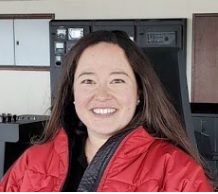
Professor Eleanor Frajka-Williams, Universität Hamburg, Germany

Professor Eleanor Frajka-Williams, Universität Hamburg, GermanyEleanor Frajka-Williams is a physical oceanographer who uses ocean observations to investigate ocean dynamics and circulation in a changing climate. She has a particular interest in problems spanning scales (from micro- to large-scale) or spheres (biogeosphere, cryosphere, atmosphere), and in methods that leverage traditional observations with new platforms and satellite data. |
| 16:00 - 16:15 | Discussion |
| 16:15 - 16:45 |
Implications of Atlantic circulation on UK policy
Abstract will be available soon
Professor Gideon Henderson FRS

Professor Gideon Henderson FRSGideon Henderson FRS became Defra’s Chief Scientific Adviser from October 2019 and is a Professor of Earth Sciences at the Department of Earth Sciences, University of Oxford. He is also a Senior Research Fellow at University College, Oxford and an Adjunct Associate Research Scientist at the Lamont Doherty Earth Observatory of Columbia University. In 2013, he was elected a Fellow of the Royal Society. His research uses geochemistry to understand surface earth processes, particularly those relating to climate, the ocean, and the carbon cycle. |
| 16:45 - 17:00 | Discussion |



